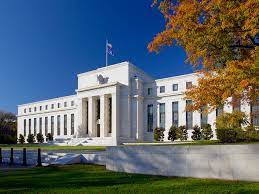Investment Strategies
Defensive Sectors Beat Cyclicals When Rates Are First Cut – Schroders

With analysts expecting interest rates to come down, strategist Tina Fong and economist Ben Read at the UK-listed investment house discuss which areas of the US equity market perform best after the first rate cut.
Defensive sectors tend to outperform their cyclical peers when a central bank first decides to cut interest rates, according to Tina Fong and Ben Read at UK-listed investment manager Schroders. The prospect of a rate cut by the US Federal Reserve is an increasingly noisy talking point.
For the analysis of sectors, Schroders has grouped them into cyclicals and defensives based on sensitivity to the state of the overall market. “For instance, the cyclical sectors, such as technology, outperform even more when the market rises, but also decline more when the market falls,” the authors of the note said.
The defensive outperformance is particularly noticeable when rates are first cut. “This is especially evident during recessions, which is likely due to investors seeking areas of the market which are most likely to withstand the weaker growth environment and benefit from more aggressive rate cuts,” the authors said.
By contrast, most cyclical sectors perform poorly in the initial three months after the first rate cut, particularly when the rate cut occurs during a US recession. “But a year after the start of the easing cycle, cyclical sectors usually deliver stronger returns,” Fong and Read said.
The Schroders paper has come out a week after global equity sold off sharply amid worries that the US economy – the world's largest – is stuttering. There has also been commentary about high valuations of the "Magnificent Seven" big tech stocks such as Alphabet, Nvidia and Microsoft, encouraging a rapid unwinding of stock market trading positions. Markets have partly recovered, but there appears a lingering level of caution. And as the weeks go by ahead of the 5 November US elections, there is speculation that the Federal Reserve will cut rates. Economists expect a quarter-point reduction in interest rates at the Fed’s 17 to 18 September meeting, Bloomberg has reported.
The pattern
Initially, cyclicals sell off on the back of the rate cut, which
is likely to be in response to the weaker growth and inflation
backdrop. But at some point, these areas of the market become
attractive as the equity valuations of these stocks become
cheaper and investors anticipate the rate cuts boosting economic
activity and corporate earnings. That said, both financials and
consumer discretionary sectors have been the exceptions, as they
have generally done well even in the initial months after the
first cut.
Interestingly, the tech sector underperforms the broader market in the first few months after the rate cut. “But its performance has been negatively skewed by the big sell-off during the technology bubble recession in the early 2000s. Without this period, technology stocks usually achieve positive returns when rates are cut,” Fong and Read continued.
Equity styles
The Schrodrers authors highlighted how the momentum style
has, on average, been the best performing area of the market
during past rate cutting cycles. “These stocks would have been
performing very well before the rate cutting cycle, and the
pick-up in investor sentiment following the first cut is only
going to boost that performance,” they said.
To a slightly lesser extent, quality and growth stocks have typically generated positive returns during rate cutting cycles. This is consistent with their previous analysis on these equity styles performing well in a low inflationary environment. “Growth, quality and momentum stocks perform worse when the rate easing cycle occurs in recessions. This might be because investors rotate into the more defensive areas of the market such as the minimum volatility (min. vol.) style,” Fong and Read added.
“Even small caps tend to do well after the first rate cut during recessions,” they said. It may be that small caps benefit from the more aggressive rate cutting that occurs in recessions. However, their analysis is dependent on the time horizon. For example, analysis of small caps back in the 1920s shows that they have for most of the time outperformed the market a year after the first rate cut.
But after the mid-1980s, small caps have underperformed the broader market after the first rate cut. The difference is likely due to changes in the composition of sectors in the small-cap universe, which has increased its share of financial and real estate companies but reduced its exposure of technology and consumer discretionary sectors. Clearly, the sector exposures of equity styles are dynamic, and the past investment playbook does not guarantee future performance.
Given their baseline view of no recession in the US and the anticipated rate cut by the Fed in September 2024, Fong and Read believe that it is likely that momentum, growth, and quality stocks will outperform. This finding is consistent with their analysis of these equity styles within a low inflationary backdrop. “At the same time, defensive sectors compared to their cyclical peers are also likely to thrive in an environment where rates are being cut,” they concluded.
